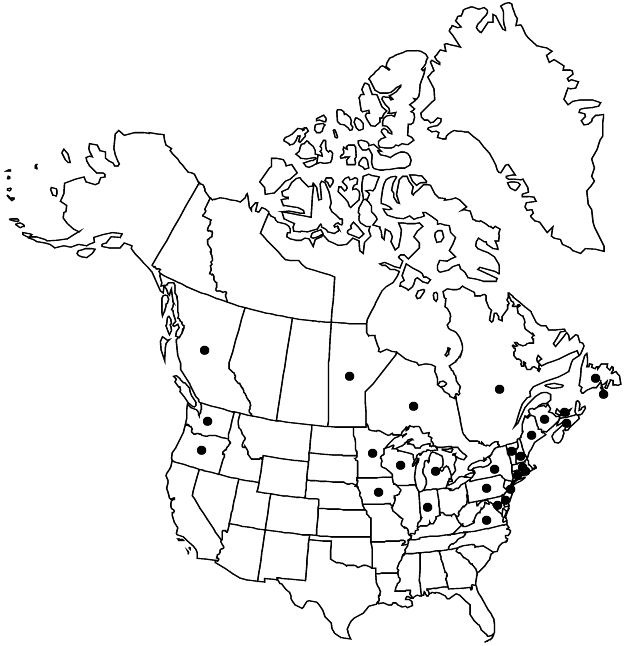Hypericum boreale
Bull. Torrey Bot. Club 22: 213. 1895.
Herbs annual or perennial, erect, with decumbent to prostrate, rooting base, usually 2–6-branched, branches spreading or ascending distal to middle, 0.9–3.3 dm. Stems: internodes 4-angled, apical internode shorter than adjacent one or almost absent. Leaves spreading, sessile; blade (concolor), broadly to narrowly oblong or elliptic to oblanceolate or round, 5–15 × 2–5 mm, papery to membranous, margins plane, apex rounded, basal veins 3–5, midrib branched or not. Inflorescences cylindric to rounded-pyramidal, 1–13-flowered, branching mostly dichasial; bracts not linear-subulate. Flowers 3–5 mm diam.; sepals usually lanceolate to narrowly oblong, rarely oblanceolate, equal, 2.5 × 0.8–1 mm, margins sometimes ciliate, not setulose-ciliate, apex rounded; petals pale-yellow, oblong, 1.7–3.5 mm; stamens 5–16, scarcely grouped; styles 0.5 mm; stigmas broadly capitate. Capsules narrowly ovoid to cylindric-ellipsoid, 4–5 × 2–2.5 mm, usually broadest at or near middle. Seeds 0.4–0.7 mm; testa finely linear-scalariform. 2n = 16 [“18”].
Phenology: Flowering summer–early fall (Jul–Sep).
Habitat: Bogs, poor fens, lake margins, marshes
Elevation: 0–500 m
Distribution

St. Pierre and Miquelon, B.C., Man., N.B., Nfld. and Labr. (Nfld.), N.S., Ont., P.E.I., Que., Conn., Del., Ind., Iowa, Maine, Md., Mass., Mich., Minn., N.H., N.J., N.Y., Oreg., Pa., R.I., Vt., Va., Wash., Wis.
Discussion
Where Hypericum boreale grows submerged, the plants are almost always sterile with elongated stems and suborbiculate leaves (H. boreale forma callitrichoides Fassett). Such plants intergrade shorewards with typical H. boreale (F. H. Utech and H. H. Iltis 1970). All other chromosome counts for H. mutilum and its near relatives have given n = 8; B. M. Kapoor’s (1972) count of 2n = 18 must be treated with reserve.
Hypericum mutile var. boreale (Britton) E. P. Bicknell is not a validly published name.
The discovery of Hypericum boreale near the mouth of Fraser River at Vancouver in 1989 extends the distribution of this species across Canada almost to the Pacific coast; this occurrence is almost certainly the result of recent introduction.
Selected References
None.
Lower Taxa
"dm" is not declared as a valid unit of measurement for this property.No values specified.